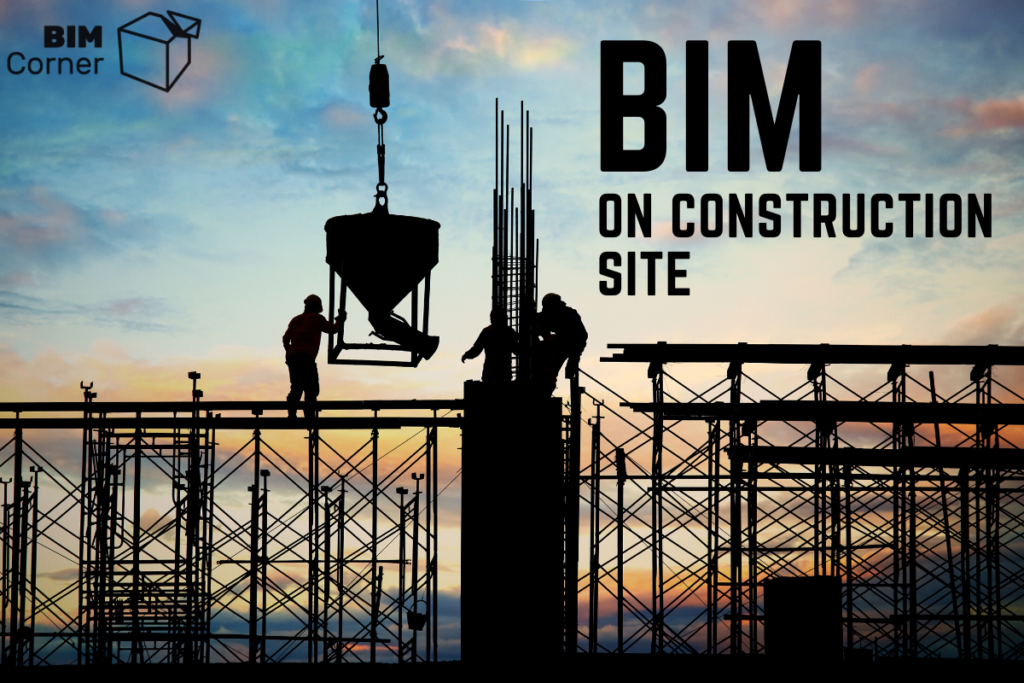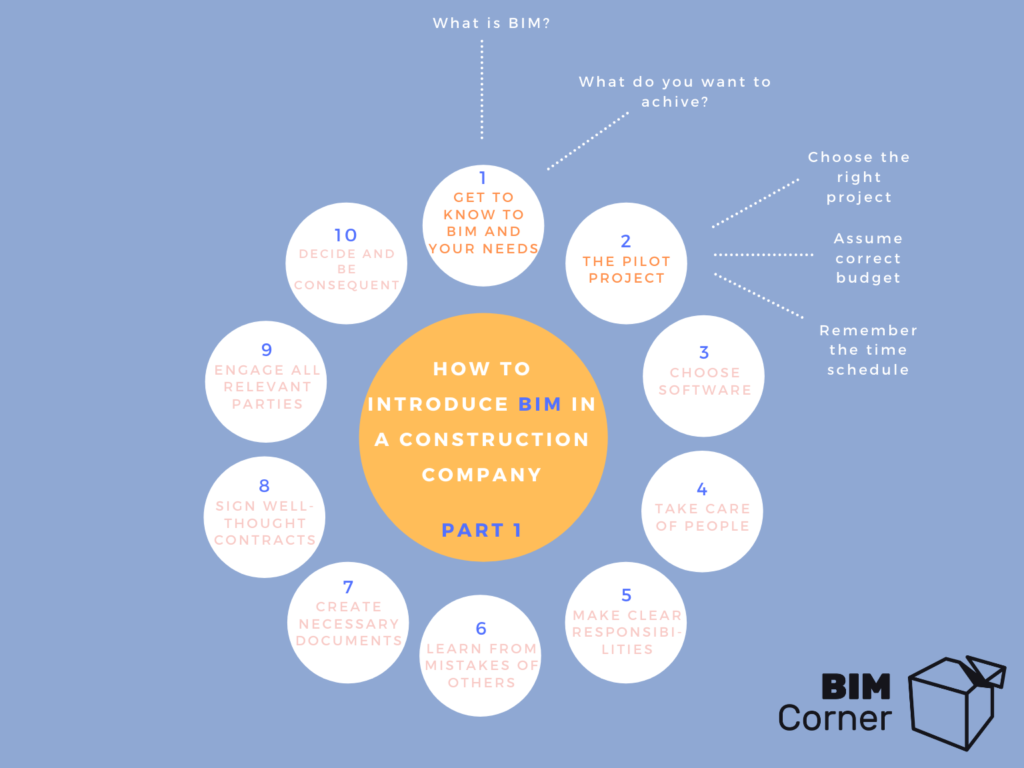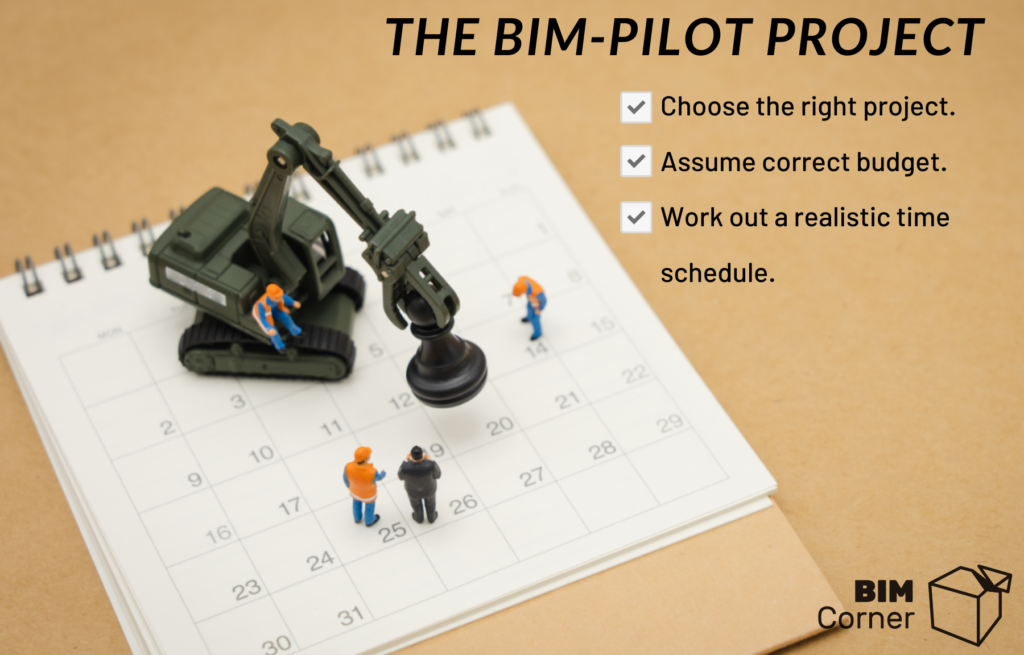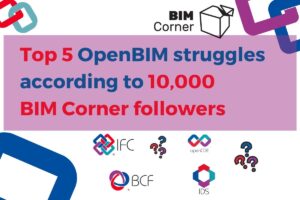You may create a ‘Road Map’ for the next 10 years to introduce BIM to your company, you may attend conferences and listen to the opportunities and challenges of the technology, you may also learn about the competitor’s experience with BIM in other execution companies and BIM on construction site. However, ultimately, you need action – practice is always the best way to learn. While many companies have already gone through the process, there are many that still have to introduce BIM technology into their organizations.
The designers are already working at a high technological level, increasingly implementing BIM technology in their design work. The execution companies are more conservative in this regard. Why? Is BIM implementation in construction company so complicated? How to do it? How to use BIM on construction site?
How to introduce BIM technology to a construction company?
Once I became responsible for BIM technology and its introduction to the execution company, I simply didn’t know where to begin. I read articles, available literature, followed news concerning projects and companies working with BIM, went to conferences and meetings as well as talked to specialists – and ‘specialists’. I felt as if this whole BIM was incredibly difficult and complicated.
Eventually, after a few years of work – initially as a designer and then as a contractor – I realized that BIM is not so difficult. In fact, it is often (intentionally?) presented as very complicated, so that the knowledge itself seems to be like black magic.
In the following post, being an introduction to the upcoming ‘BIM on the construction site’ series, I will present two out of ten points to focus on in order to introduce BIM to a execution company. Of course, it is not the only right way and will not address all challenges – each organization and project is different, as well as we have different requirements and possibilities. However, you have to start with something!
Below I present our planned topics for the ‘BIM on the construction site’ series.
BIM on construction site - the whole serie in 10 points:
- Identify the subject and your needs (this article)
- Execute the pilot project (this article)
- Choose the software
- Take care of people
- Make clear responsibilities
- Learn from the mistakes of others
- Create necessary documents
- Sign well-thought contracts
- Engage all relevant parties
- Decide and be consequent
BIM on construction site - part one
List of contents
1. Identify the subject and your needs
A. What is BIM and how does it differ from a traditional execution of a project?
B. What do you want to achieve? What are your expectations? What goals and results do you wish to reach?
We should start with the most important question – how will I or my company benefit from it? What result do we expect after the BIM technology is introduced in the organization?
The truth is that in the coming years, the whole construction industry will be using this technology – it will happen sooner or later. In the case of my company, we have decided together with our director that the sooner we start implementing BIM, the sooner we will acquire the necessary knowledge and become more competitive on the market.
Having too high expectations towards BIM technology, especially from the very beginning, is a common mistake. Many people become discouraged after a few months, noticing that working with BIM takes the same amount of time or even more time than doing projects with the method that we are used to and know well. Therefore, it is important to define your requirements in a clear and realistic way. In the case of the first project, it is best starting with smaller goals and expectations, such as:
- We will eliminate collisions on site.
- The project will be a good reference for the future.
- We will gain the experience necessary for bigger and more complicated projects.
- We will check what works in our organization and what we need to improve.
- We will be more competitive on the market.
- We will have better communication on the project.
Although the statements above are correct, I encourage you to use the SMART method (Specific, Measurable, Achievable, Relevant, Time-bound – link: Wikipedia – S.M.A.R.T.) while setting goals and remain even more specific. To develop the first example, we can adjust it to the SMART method in the following way:
- During the entire project, we will eliminate at least 75% of collisions between the reinforcement on the XXX bridge.
The objective must be measurable, thus in this particular case, we can assume that the result – the number of collisions – will be compared to an already constructed bridge of similar size and complexity.
2. Execute the pilot project
A. Select the project
As the saying goes: ‘The journey of a thousand miles begins with a single step.’ To stop just thinking about BIM and considering the pros and cons of implementing it, you have to make a decision – ‘we’re going for it’ – and select a pilot project. It is worth noting here that this first project should be neither too complicated nor too big. We have to deal with new challenges and learn without risking too much money or time.
In case your company is working with for example large infrastructure projects, the right method is to separate and select one object or section from the whole project and run it in BIM technology. However, when the risk is excessive, or we are not sure whether we can handle the task, we can build the object in two technologies simultaneously – BIM and traditional. This kind of pilot project, carried out at the same time, has an additional advantage, as we can compare the results and gradually get used to the new working method.
When deciding on a pilot project, focus on just a few of its elements where you wish to introduce BIM. A common mistake is to immediately decide to work with BIM Level III or 4D, 5D or XX-D. For the first project, I suggest focusing only on a high-quality 3D BIM model – containing all the information required for construction with a minimum of drawings. As you gain experience, you may be tempted to add 4D – which is time and then 5D – which is money. But don’t start straight away with everything.
It is worth deciding on a pilot project together with the site manager and the rest of the staff – after all, they will face the initial challenges of changing their working methods.
B. Establish an appropriate budget
What do you need? I am always saying that good planning is at least half of the success. That’s why it’s really important to sit down and think carefully about what we really need to introduce BIM to our organization.
Money is an obvious requirement. Establishing an appropriate budget is the foundation – the use of the new technology is interesting, but in the end, we have to remember that the company has to earn and not lose money – otherwise this is not going to work. What is an ‘appropriate budget’ and how to define it?
The answer is as complex as the number and diversity of projects and organizations on the market. However, we will focus on a few repeating issues:
- Programs and licenses – software.
- Tools such as ‘BIM kiosk’ or tablets – hardware.
- People – new employees, training of existing staff, external consultants.
- Additional time dedicated to communication with the designer.
- Possible additional work related to interaction with subcontractors and suppliers.
All the above points will be discussed in more detail later in the series. After it is completed, I plan to present a cost assumption from a sample project to demonstrate in practice what kind of budget you can expect.
C. Prepare a time schedule
Besides the money, we have to give ourselves the right time to introduce BIM. The changes will not happen overnight, and it should be planned from the beginning that the design itself can be extended, affecting directly the construction’s time schedule. From my work experience with different design companies, designing in BIM technology and without drawings may take as much, or even more time as designing in a traditional way. Of course, it all depends on the complexity of the project and its specifics. The advantage of BIM, however, is that in case of modifications, they will be executed much faster and the majority of collisions will be detected already on the level of the 3D model.
We also need to state clearly in the time schedule when we expect finished and approved drawings on the project – including the time required for internal documentation control as well as ordering and delivering materials. For the ‘design and build’ project, where the execution company is also responsible for the design, which usually proceeds simultaneously with the construction works, it is necessary to present the designers the priorities. Through a well-thought and well-written contract and open communication, we can ensure that the documentation is delivered on time.
3. Summary of the first part
This article initiates the ‘BIM on the construction site’ series, but to introduce the technology in the field, we need to implement it in our organization first. This is why we start with focusing on the introduction of BIM in a construction company. I am describing here my experiences, thoughts, as well as issues, which we must remember if we want the whole process to run as smoothly and efficiently as possible.
Do you use BIM in your construction company? Share your experience and thoughts with us – in the comment below or write us on [email protected].
Check out other articles about BIM in construction company and on site:











Awesome post! Keep up the great work! 🙂
We need à full details for à project done by using BIM
Hi all, I just would like to know, in the UK construction projects, Who pays for BIM Common Data Environment (CDE) software? Is it the client, construction company, or design company?
Hello Ling and thank you for your comment!
It all depends on the contract type and client’s strategy and what is the ‘BIM level’. For example, if it is a ‘BIM level 3’, design and build project, the client can require that the contractor provides the whole CDE platform and prices it in his offer. And if it is a smaller private-investor contract, the client can decide to take care of the CDE himself. So there is not just one correct solution.
Additionally, each company can have its own ‘local’ CDE, which they pay for separately.
Please note that I have experience in the Norwegian market, however, I would say that it is similar in the UK.
Thank you so much for your kindly reply!!!!!!
Could you please inform me if there is an African country that has used this technology ? Thank you in advance !!
Hello Agonafir,
I do not have any experience with BIM in Africa, but I am sure that some companies have used this methodology on this continent.
Best regards,
Konrad N.
Thank you very much for the reply !!
kind regards,
Agonafir. Z